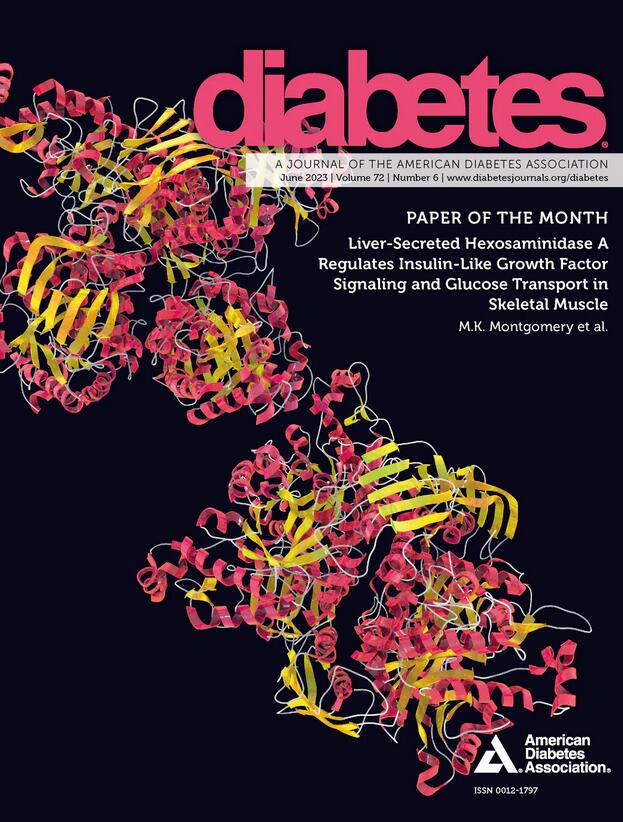The Disposition Index in Autoantibody-Positive Individuals at Risk for Type 1 Diabetes
IF 6.2
1区 医学
Q1 ENDOCRINOLOGY & METABOLISM
引用次数: 0
Abstract
Since little is known about the disposition index (DI) in autoantibody-positive individuals, we have assessed whether DI has a similar association between insulin secretion and resistance to the association observed in other populations. In TrialNet Pathway to Prevention (TNPTP; n=6620) and Diabetes Prevention Trial-Type 1 (DPT-1; n=704) study participants, two secretion-sensitivity pairs each representing a DI were analyzed cross-sectionally at baseline: AUC C-peptide/AUC glucose (AUC Ratio) and Matsuda Index (MI) from TNPTP OGTTs (oral DI), first-phase insulin response (FPIR) and 1/fasting insulin (1/FI) from DPT-1 from IVGTTs (DI). Participants were followed for progression to type 1 diabetes. Within the normal and diabetes glucose ranges, associations of AUC ratio with MI in TNPTP, and FPIR with 1/FI in DPT-1, had inverse curvilinear patterns with convexities to the origin. After logarithmic transformations to linearize the secretion and sensitivity measures, the inverse slope was steeper for the diabetes range (p<0.0001). In a Cox regression model including the AUC Ratio and MI as variables and another model including FPIR and 1/FI, the interaction terms of secretion x sensitivity (i.e., the DI/ODI), predicted stage 3 type 1 diabetes in both (p<0.0001). The DI remained significantly predictive (p<0.0001) when the DPT-1 risk score was added as a covariate in regression models. In autoantibody-positive populations, insulin secretion is inversely related to sensitivity in a quasi-hyperbolic relationship in normal and diabetes ranges of glucose. The DI can be represented by a statistical and physiologic interaction between secretion and sensitivity that is predictive of stage 3 type 1 diabetes.求助全文
约1分钟内获得全文
求助全文
来源期刊

Diabetes
医学-内分泌学与代谢
CiteScore
12.50
自引率
2.60%
发文量
1968
审稿时长
1 months
期刊介绍:
Diabetes is a scientific journal that publishes original research exploring the physiological and pathophysiological aspects of diabetes mellitus. We encourage submissions of manuscripts pertaining to laboratory, animal, or human research, covering a wide range of topics. Our primary focus is on investigative reports investigating various aspects such as the development and progression of diabetes, along with its associated complications. We also welcome studies delving into normal and pathological pancreatic islet function and intermediary metabolism, as well as exploring the mechanisms of drug and hormone action from a pharmacological perspective. Additionally, we encourage submissions that delve into the biochemical and molecular aspects of both normal and abnormal biological processes.
However, it is important to note that we do not publish studies relating to diabetes education or the application of accepted therapeutic and diagnostic approaches to patients with diabetes mellitus. Our aim is to provide a platform for research that contributes to advancing our understanding of the underlying mechanisms and processes of diabetes.
 求助内容:
求助内容: 应助结果提醒方式:
应助结果提醒方式:


